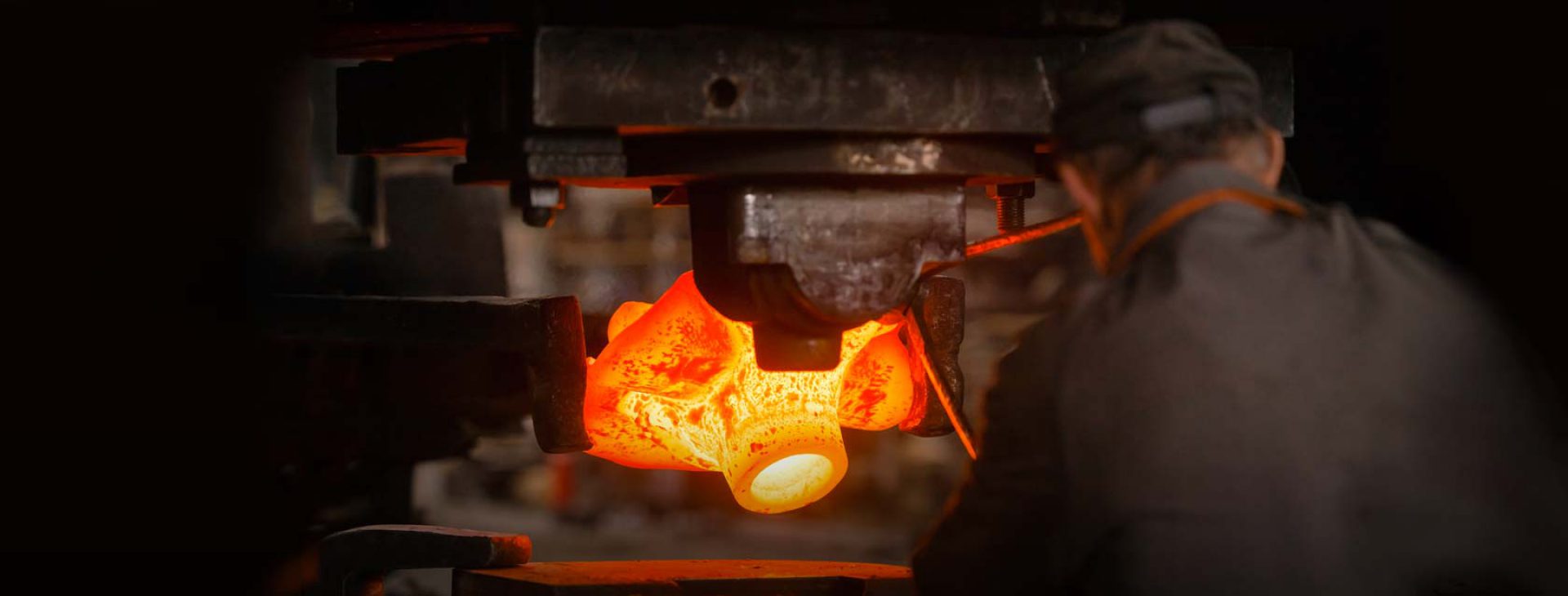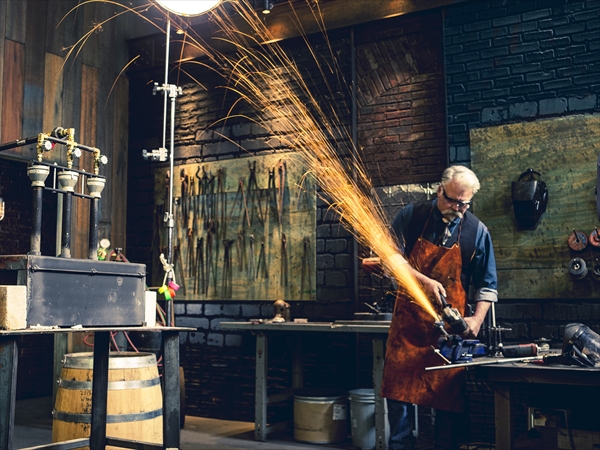“Forging” is the generic term that describes a metal working process by forming metal workpieces with heat and high pressure, which differs from casting (see difference between forging and casting). The forging of metals is one of the oldest working techniques of mankind. Today we would like to introduce how forging process is developed since it was produced thousands of years ago.
The Origin of Forging Process
It is recorded that the steel forging has a history of 6,000 years.
The art of the forging techniques dates to at least 4000 BC and earlier. The hot forging of metals all began in the land of Mesopotamia, between the Tigris and the Euphrates.
Before mankind started to use fire for its own purposes, it was a threat representing uncontrollable destruction. People soon found out that metals like gold, silver, copper, lead and pewter could be shaped with fire. An important prerequisite for the evolution of the craft of forging – and for today’s use of computer-calculated forging parts.
Bronze and iron were first used in the forging process by the early man to produce hand tools, weapons of war, and jewelry. However, Gold was the first recorded metal that was forged by fire and employed by humans. To shape the metal, rock was used as a forging hammer. Until the end of the 19th century, the precision forging of iron and steel continued.
The Development of Forging in 19th Century
Wrought iron in open die forging way was something the 19th century smiths were greatly proficient and skilled at. However, there was a catch!
The wrought iron could only be formed in great heat. Therefore, the forge-smiths became competent in hammer welding. The process of forging and hammer welding underwent by smiths resulted in huge shaft forgings weighing 10 tons and more.
Then came the great invention of the steam engine in the 19th century which the world witnessed! The invention introduced the human race to the modern forge engineering as we all know it!
The electrical power harnessed from the engine and the resultant explosive developments was all a boon for the industrial forge.
After the mid-19th century, the forging technology got in contact with an energy source of a hitherto unknown dimension. After the encounter, the forging industry was no longer dependent on the river locations. It developed powerful steam hammers and air hammers after that.
The late 19th and the early 20th century smiths incorporated hammers driven by transmission shafts. With the help of such hammers, they produced an assortment of forged parts mainly for the railway, car, and agricultural industry.
The Development of Forging in 20th Century
The second half of the 20th century saw improved productivity due to the growth of solid-state electrical induction heaters. The induction heating technique empowered greater throughput and enhanced dimensional control of the forged components.
The industrial revolution and the World War II also had a great impact on the forging industry and its techniques. It paved way for enhanced forging press equipment, forging processes, and forging machine.
Ironically, the war scene was of great assistance to the forging industry. It was in great demand to produce weapons.
Modern Forging Process
Modern forging process is operated by computer-controlled hydraulic and air hammers, and is classified in open die forging and closed die forging methods. The most advanced production equipments promote to a successful progress in the forged products.
In modern forging industry, most of the components are produced in steel forging due to its high strength and good performance. Currently, a variety of steel forgings are manufactured in closed die forging method for use in the aerospace, automotive, mining, agriculture, and energy industries.
Today, forging has become one of the most widely used production techniques that contributing to the development of the mankind! Of course future forging process will keep updated and be more efficient. We believe in further, forging will be the leading production method for all metal alloys in a more cost effective way.



